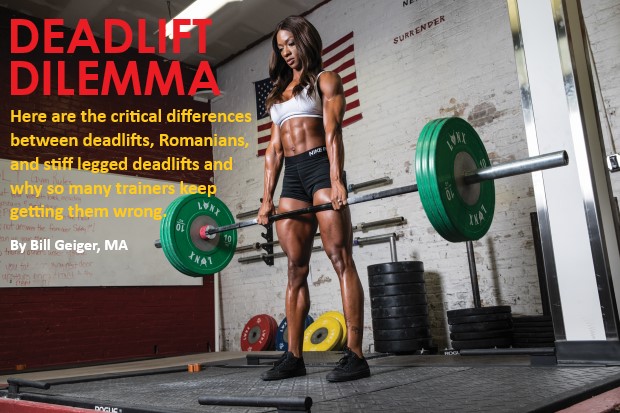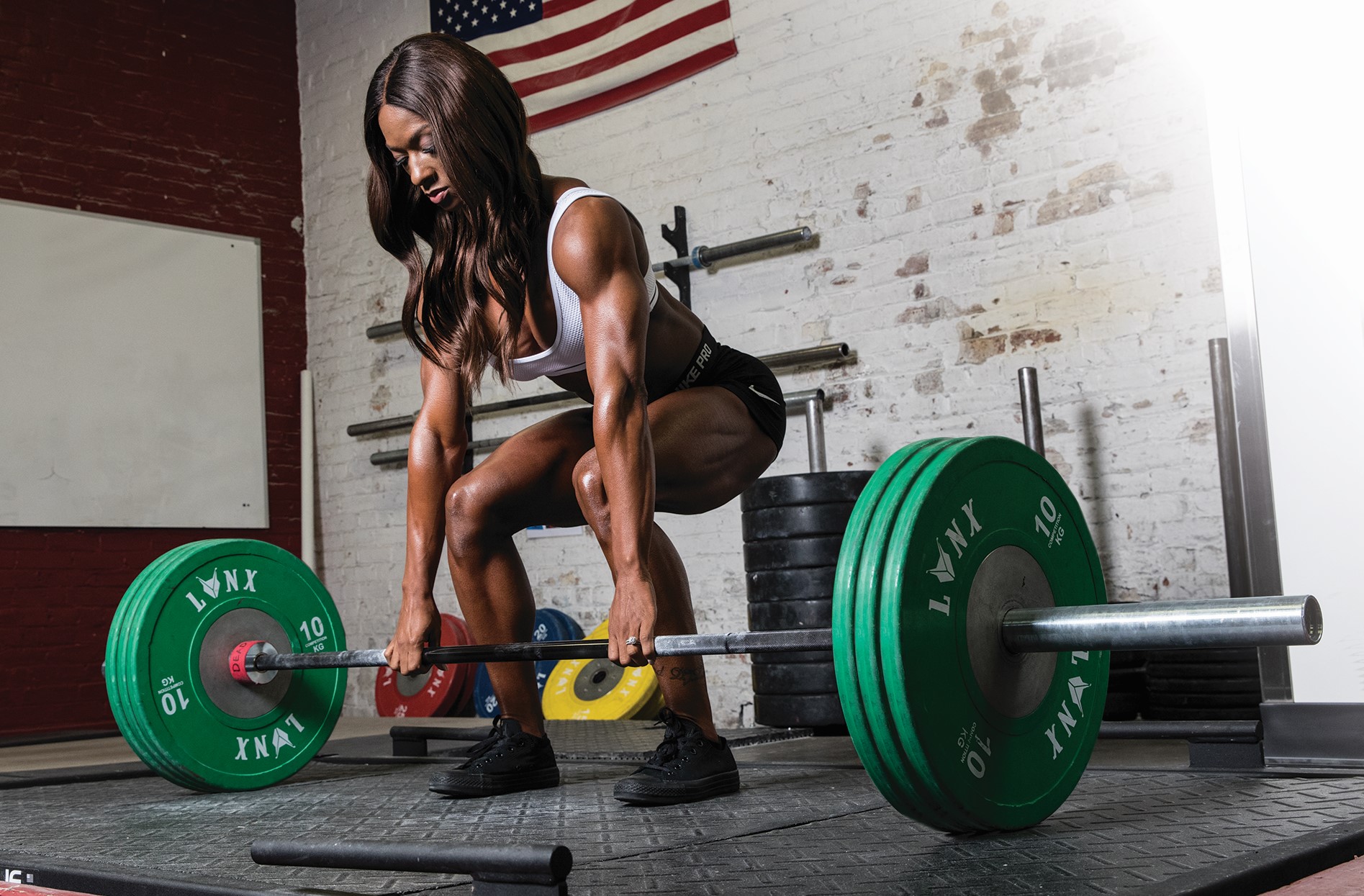Differences Between Deadlifts, Romanians, and Stiff Legged Deadlifts

Here are the critical differences between deadlifts, Romanians, and stiff legged deadlifts and why so many trainers keep getting them wrong.
Unlike the ’80s when I began lifting, more and more folks today are including barbell deadlifts in their workouts, and for good reason: They build a great base of strength, especially along the posterior chain, and recruit so much of the body’s musculature that prompts a significant anabolic stimulus—far stronger than most other exercises.
It’s a complex exercise that you have to practice over and over again to get it right. Even still, way too many lifters make this one incredibly common mistake that delivers a near-fatal blow to the deadlift’s effectiveness. Let’s take a closer look at what’s all too-often going wrong.

The deadlift, in which the bar starts on the floor in a “dead stop” position (that is, you get no support from elastic energy when reversing direction because it settles on the floor each rep), requires you to descend into a half-squat position, which keeps your body more upright. Read that again: half-squat! Instead, many trainers simply bend over at the hips, pushing their glutes rearward, and turn the movement into more of a single-joint exercise. That single flub turns the deadlift into a Romanian deadlift (RDL). It’s a great exercise for the upper hamstrings and glutes, and it puts more stress on the lower back because your body is now bent over. But with RDLs, which are typically done with hamstrings exercises on leg day, you can’t go near as heavy (remember, it’s single joint), and the plates should never (ever!) touch the floor! (RDLs use the elastic energy built up from the stretch reflex.)
Those looking for all the benefits of conventional deadlifts and seeking to move serious poundages with less lower-back involvement should learn to distinguish between the two great exercises. There are a number of key pointers to remember with deadlifts, but if you’re like a lot of people in the gym and not descending into a half squat (and instead just bending over), you still don’t have it right!

RDLS AND STIFFLEGGED DEADLIFTS
Now that you know how to separate deadlifts from their cousins, let’s also quickly show you how RDLs differ from another family member, the stiff-legged deadlift (SLDL). No, they aren’t the same movement, even though they look similar from a side view and most folks don’t know the difference.
The SLDL, which most trainers think is an alternative name for the RDL (and even bodybuilding websites commonly get them confused!) is actually a lower-back exercise in which the lower back rounds (rounding stretches the lower-back musculature and is essential for the muscle to fully contract). Hence, you never want to be using heavy weights when doing SLDLs. Another difference: With RDLs, the bar stays close to your shins, running right up and down your thighs, whereas with SLDLs, the bar is about 10 inches away from your legs at the bottom. That, too, puts more pressure on the lower back. You typically use a very light weight with SLDLs.
Technically, with Romanians you bend at the hips, not the waist, which allows you to keep your lower back flat throughout the movement. Keeping it neutral (flat) or slightly arched is created by the lower-back musculature undergoing an isometric contraction, which prevents it from rounding. With SLDLs, you bend at the waist, not the hips. While that seems like a minor distinction, it isn’t. Bending at the waist allows your lower back to round. You never want your lower back to round when doing deadlifts or RDLs. There’s some degree of active work involved, but you mostly want an isometric contraction to lock in a safe arch. The SLDL, being a lower-back movement, requires your erectors to work through a far longer range of motion. Keeping the weight light here can help ensure you keep your disks safe.
Get the technique down for each movement and understand where they best fit into your workouts. Doing hybrid exercises that combine elements of each exercise, which is an incredibly common mistake I see every day in the gym, can slow down muscle growth and have unintended consequences for your spine.

